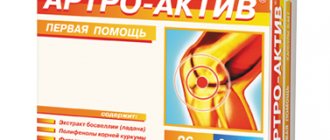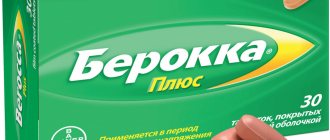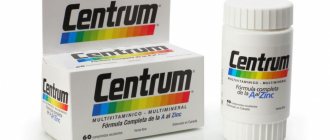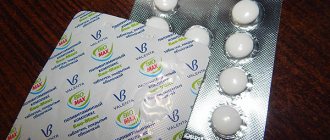Magnesium is the main anti-stress macronutrient!
Murzaeva Irina Yurievna
Endocrinologist, Preventive Medicine Doctor
March 13, 2018
Not so long ago, I began to get involved in the problems of violations of the most important micro (macro) elements in the human body , and it all started with a search for the causes of autoimmune thyroiditis and the reasons for its prevalence, with a textbook on micro element violations in AIT, then the topic began to expand in search of the causes of “massive hair loss ", including in children, searching for the causes of frequent acute respiratory viral infections in children... more to come. It turned out that the violation of the microelement composition of the human body is a huge science and more than one Russian scientist is engaged in this, but this topic is poorly covered and there is little literature where you can familiarize yourself with it:!: But whoever searches will always find.
Today we start talking about the most important microelements and macroelements for humans.
Magnesium is a mineral that is now actively discussed and advertised ... “magnesium for stress”, “magnesium for irritability”, “magnesium for arimagnesium for seizures” “magnesium for uterine hypertonicity during pregnancy”, etc. MagneB6 and Magnelis are perhaps the most famous magnesium preparations. But this is just the tip of the iceberg, magnesium is not so simple...)
Magnesium is involved in more than 300 enzymatic processes in the body; magnesium, along with sodium and potassium, is a vital macroelement (not even a microelement  ).
).
There is only 24 grams of magnesium in the body (this is not much), but without it, it is not possible to conduct a nerve impulse along nerve fibers, or contract the heart, or contract muscles, or regulate blood pressure; without it, blood coagulation is disrupted, appetite is disrupted, there can be nausea and vomiting and other disorders. A separate book has been written about magnesium; it is a serious scientific work, 800 pages long, entitled “Magnesium and the Diseases of Civilization.” In this article I will not cover all the most important “points of application” of magnesium in the body, sometime later, I’d rather talk about its practical application...
Magnesium is a mineral that is difficult to “accumulate” in the body, it is consumed extremely quickly, and the more stress, the more pronounced the magnesium deficiency... But not all magnesium preparations can successfully replenish its deficiency.... For its absorption and for the best effect in a given situation, it is important to understand what magnesium is “connected” with. I’ll explain in more detail... In order to enter the body, magnesium must be “in the composition” of salt or some organic compound, and the effect of magnesium and digestibility will depend on the nature of “this conductor - salt or organic matter”.
Now about magnesium absorption: Magnesium can exist in the following 15 forms −
magnesium citrate, magnesium malate, magnesium glycinate and bisglycinate, magnesium threonate, magnesium carbonate, magnesium lactate, magnesium taurate, magnesium chloride, magnesium orotate. magnesium sulfate, magnesium chelate, magnesium oxide, glutamate and magnesium aspartate.
And now I’ll decipher:
Magnesium citrate is a magnesium salt of citric acid, the most digestible form of magnesium, used in most well-known drugs - MagneB6 and Magnelis, magnesium citrate solgar, etc., is used more often as an antispasmodic, relieves spasms of the gastrointestinal tract, that is, relieves constipation and impaired bile secretion, good in gastroenterology.
Magnesium malate is a magnesium salt of malic acid that relieves hypomagnesium muscle cramps, relieves fatigue and aluminum intoxication in the body.
Magnesium threonate - in combination with threonic acid, in studies improves long-term and short-term memory, better than magnesium citrate
Magnesium taurate is a non-toxic form of magnesium, very bioavailable, good to use for insulin and leptin resistance, that is, it reduces cravings for overeating sweets and “night gluttons.”
Magnesium oxide - can only be used in cases of reducing high stomach acidity; in other cases it causes severe osmotic diarrhea. Therefore, it is good for constipation.
Magnesium chloride - used primarily as bath salts with a calming effect on the nervous system, but more on that later.
Magnesium orotate is a compound of magnesium with orotic acid, has a predominant effect on the heart muscle, is used for rhythm disturbances and congenital heart disease such as mitral valve prolapse.
Magnesium sulfate - combined with sulfuric acid, used in bath salts (in this form it is practically irreplaceable), in “famous” intravenous injections, mainly to relieve hypertensive crises.
Magnesium aspartate and glutamate - it is better not to use, they belong to the class of endotoxins.
Magnesium glycinate and bisglycinate are a good form of magnesium, mixed with glycine, good for chronic fatigue syndrome and pelvic pain, good because it does not cause a laxative effect.
Magnesium lactate is an artificially synthesized, inexpensive form of magnesium, has a general strengthening effect, as an excipient it is used in most magnesium preparations as an integral part.
Magnesium carbonate - also used for increased stomach acidity, neutralizes the effect of NSAIDs, good for GERD, not for phenylketonuria.
Magnesium chelate is a form of magnesium immersed in an amino acid, facilitating bioavailability. The absorption of the chelate and, accordingly, magnesium from it is 90% , it does not change the acidity of the stomach, unlike forms combined with acids - therefore it is suitable for everyone, but accordingly it is less effective for constipation and other gastrointestinal dyskinesias, but is rarely found in retail sales and is expensive form of magnesium.
Magnesium is in close relationship with calcium, vitamins K2 and D3. The balance of these four elements will help maintain health without complications.
Only for thyroid function, magnesium has a less significant effect than selenium, iodine and iron, for example.
Now about my favorite form of magnesium...... If you don’t want to swallow pills, you don’t need a laxative effect, and your nerves are “on edge and you can’t sleep,” it wouldn’t be a bad idea to carry out an Anti-Stress or Detoxification program—your ideal option—English baths salt, or, simply put, baths with magnesium sulfate 0.5-1 kg of salt per 1 bath and within the first 15 minutes “you will start to fall asleep in the bath.”
Below are questionnaires by which you can determine magnesium deficiency in an adult and a child.
Doppelhertz Active Magnesium + B vitamins tablets No. 30
Name
Doppelhertz Active Magnesium + B Vitamins.
Release form
Pills.
Type of drug
Dietary supplement
Purpose
Chronic fatigue syndrome, restorative, increased performance, increased irritability, increased fatigue, for the nervous system
Indications for use
Recommended as a dietary supplement - a source of folic acid, vitamins B1, B6, B12 and magnesium.
Compound
Active ingredient: magnesium 400 mg, vitamin B1 4.2 mg, vitamin B6 5 mg, vitamin B12 5 mcg, folic acid 600 mcg.
Directions for use and doses
Adults: 1 tablet once a day during meals with plenty of liquid, without chewing. Duration of treatment is at least 2 months. Doppelhertz® active Magnesium + B vitamins is not a medicine.
Side effects
Allergic reactions.
pharmachologic effect
Doppelhertz® active dietary supplement Magnesium + B vitamins are used in cases of unbalanced nutrition or increased need for nutrients and energy, in cases such as adverse environmental influences, increased physical activity and frequent stressful situations, chronic fatigue, fatigue, after severe illnesses. Magnesium is very important for the energy supply to the body's cells, actively participates in metabolic processes, stabilizes the heart rate, helps relieve spasm of blood vessels, and takes part in the process of neuromuscular excitation; Introducing magnesium into the body relieves pain during migraines. Useful for intense physical and mental stress. Vitamin B1 (thiamine) is involved in metabolic processes, maintains the normal functioning of the nervous system, improves memory and clarity of thinking. Vitamin B6 (pyridoxine) is involved in many biochemical reactions and helps stabilize blood sugar levels. Pyridoxine is often used in the treatment of neurological disorders. Vitamin B12 (cyanocobalamin) is necessary for normal hematopoiesis, promotes the absorption of food, protects against the development of heart attack and stroke, and normalizes the functioning of the nervous system. Folic acid is a water-soluble B vitamin. In combination with vitamins B6 and B12, folic acid takes part in protein synthesis, the formation of red blood cells, and the transfer of oxygen.
Contraindications
Individual intolerance to product components. It is recommended to consult a doctor before use.
Method of use/administration
Oral.
Storage conditions
Store at a temperature no higher than 25°C out of the reach of children. Shelf life - 3 years.
Overdose
Currently, no cases of drug overdose have been reported.
Impact on the ability to drive vehicles and operate machinery
No data.
special instructions
It is recommended to consult a doctor before use.
Interaction
Cases of interaction with other drugs are not indicated.
Buy Doppelhertz Active Magnesium+B Vitamins tab. No. 30 in the pharmacy
Price for Doppelhertz Active Magnesium + B vitamins tab. No. 30
Instructions for use for Doppelgerz Active Magnesium + B vitamins tab. No. 30
Magnesium plus
Magnesium absorption
in the gastrointestinal tract is no more than 50% of the dose taken. In the body, 99% of magnesium is found inside cells. Approximately 2/3 of intracellular magnesium is distributed in bone tissue, and 1/3 is in smooth and striated muscle tissue. Excreted in urine. Glomerular filtration is 70% of plasma filtration, tubular reabsorption is 95-97%. At least 1/3 of the administered dose of magnesium is excreted in the urine.
Pyridoxine hydrochloride
Absorbed quickly throughout the small intestine, larger amounts are absorbed in the jejunum. Metabolized in the liver to form pharmacologically active metabolites (pyridoxal phosphate and pyridoxaminophosphate). Pyridoxal phosphate binds to plasma proteins by 90%. Penetrates well into all tissues; accumulates mainly in the liver, less - in muscles and the central nervous system. Penetrates the placenta and is secreted into breast milk. T1/2 - 15-20 days. It is excreted by the kidneys (with intravenous administration - with bile 2%), as well as during hemodialysis. About 8-10% of the drug is excreted unchanged in the urine.
Folic acid
is well and completely absorbed in the gastrointestinal tract, mainly in the upper parts of the duodenum. Intensively binds to plasma proteins. Penetrates through the blood-brain barrier, the placenta and into breast milk. The time to reach maximum concentration is 60 minutes. Deposited and metabolized in the liver to form tetrahydrofolic acid (in the presence of ascorbic acid under the action of dihydrofolate reductase). It is excreted by the kidneys, mainly in the form of metabolites.
Cyanocobalamin
absorbed in the small (partly large) intestine, combining with internal factor, becoming protected from intestinal microflora. In the blood, Cyanocobalamin combines with transcobalamins I and II, with which it is transported to tissues. Cyanocobalamin is deposited mainly in the liver and is excreted from the liver with bile into the intestine, from where it is reabsorbed. Eliminated from the body by the kidneys. After oral administration of up to 2 mg, 30-97% is absorbed; absorption of the drug (depending on the internal absorption factor) after administration at a dose of more than 2 mg is noticeably reduced. Communication with plasma proteins - 90%. Cmax after oral administration is achieved within 6-14 hours. T1/2 in the liver is 500 days. Excreted with normal renal function - 7-10% by the kidneys, about 50% - with feces; with reduced renal function - 0-7% by the kidneys, 70-100% - by feces. Penetrates through the placental barrier into breast milk.





